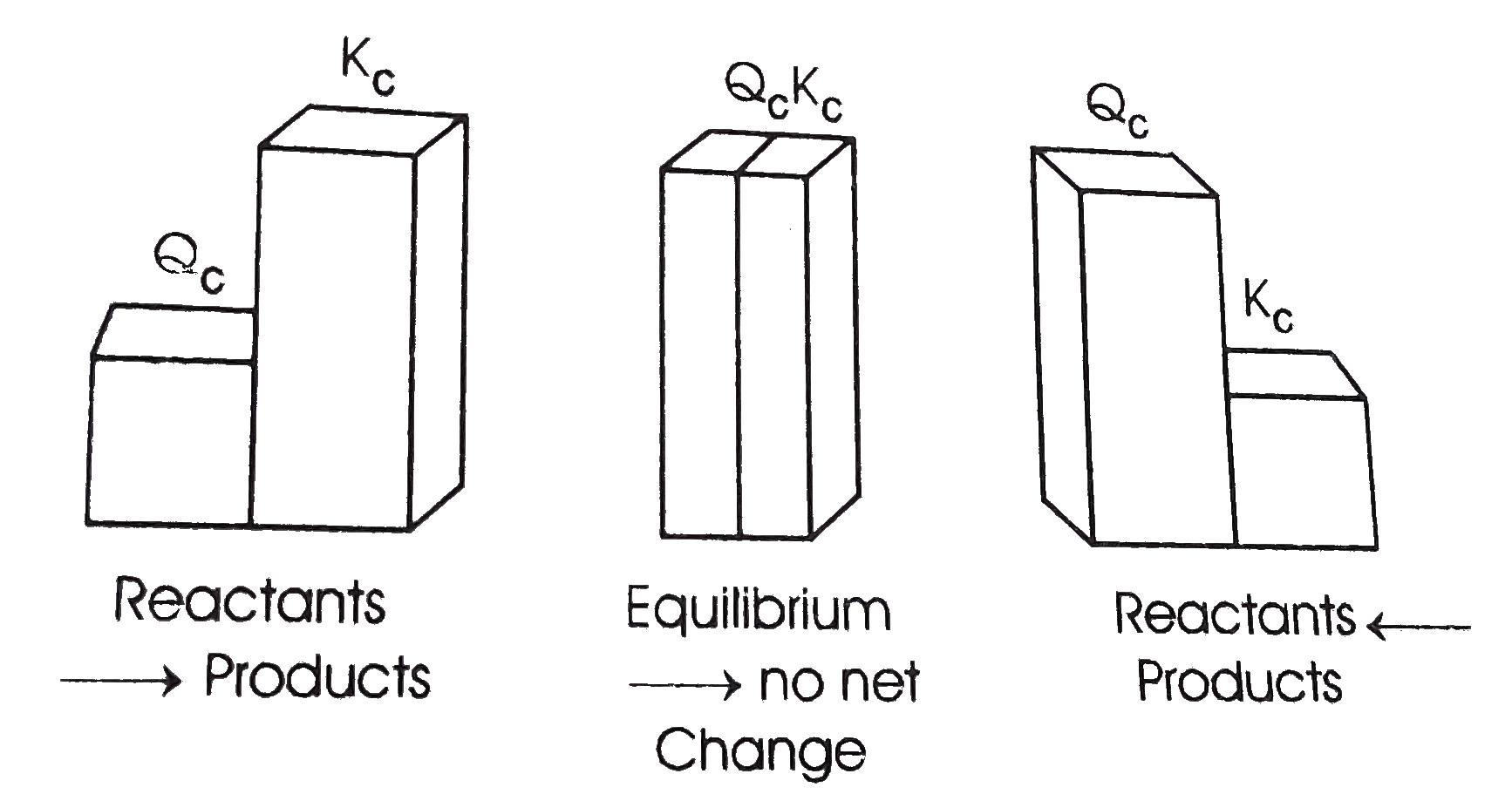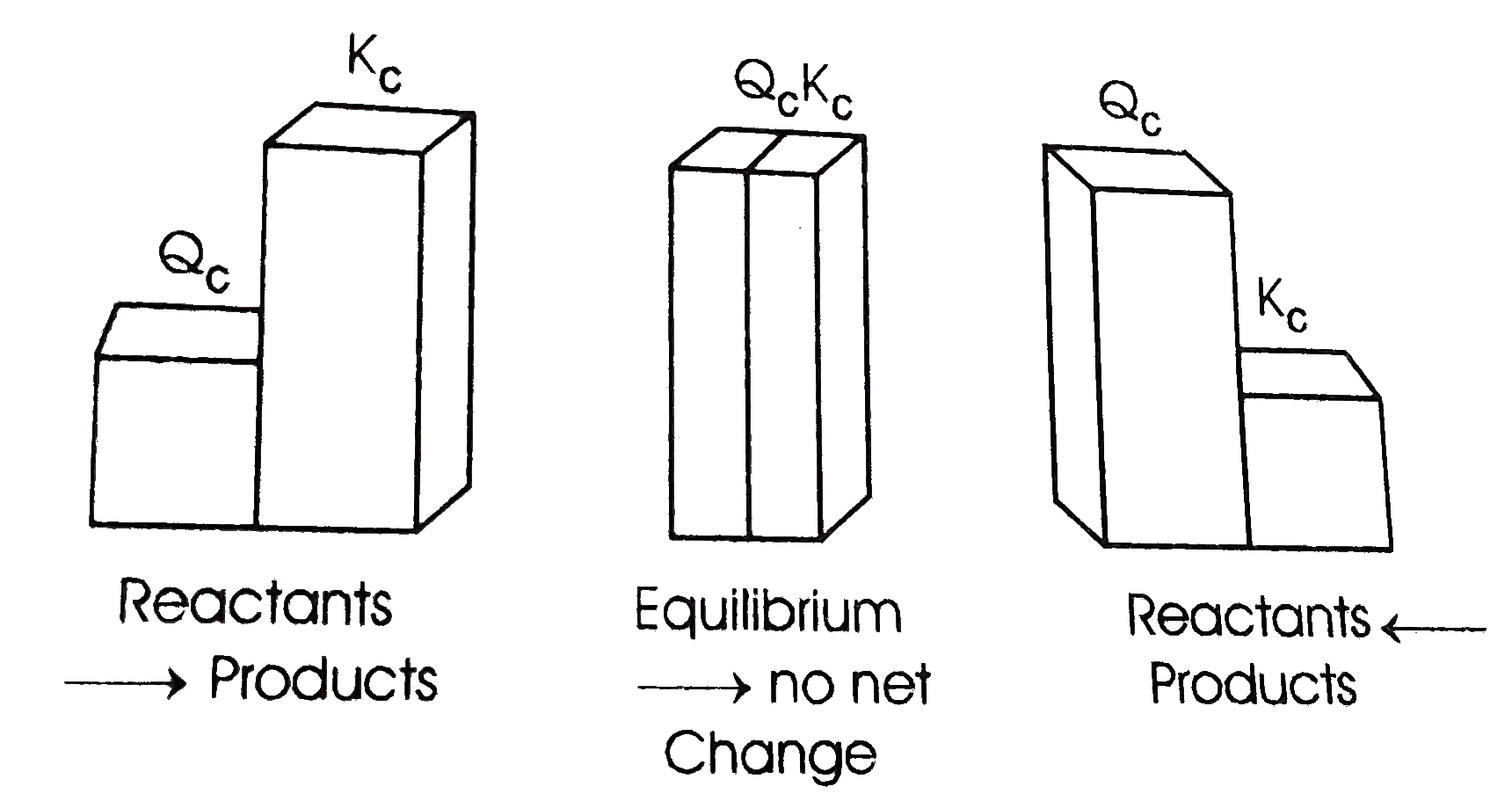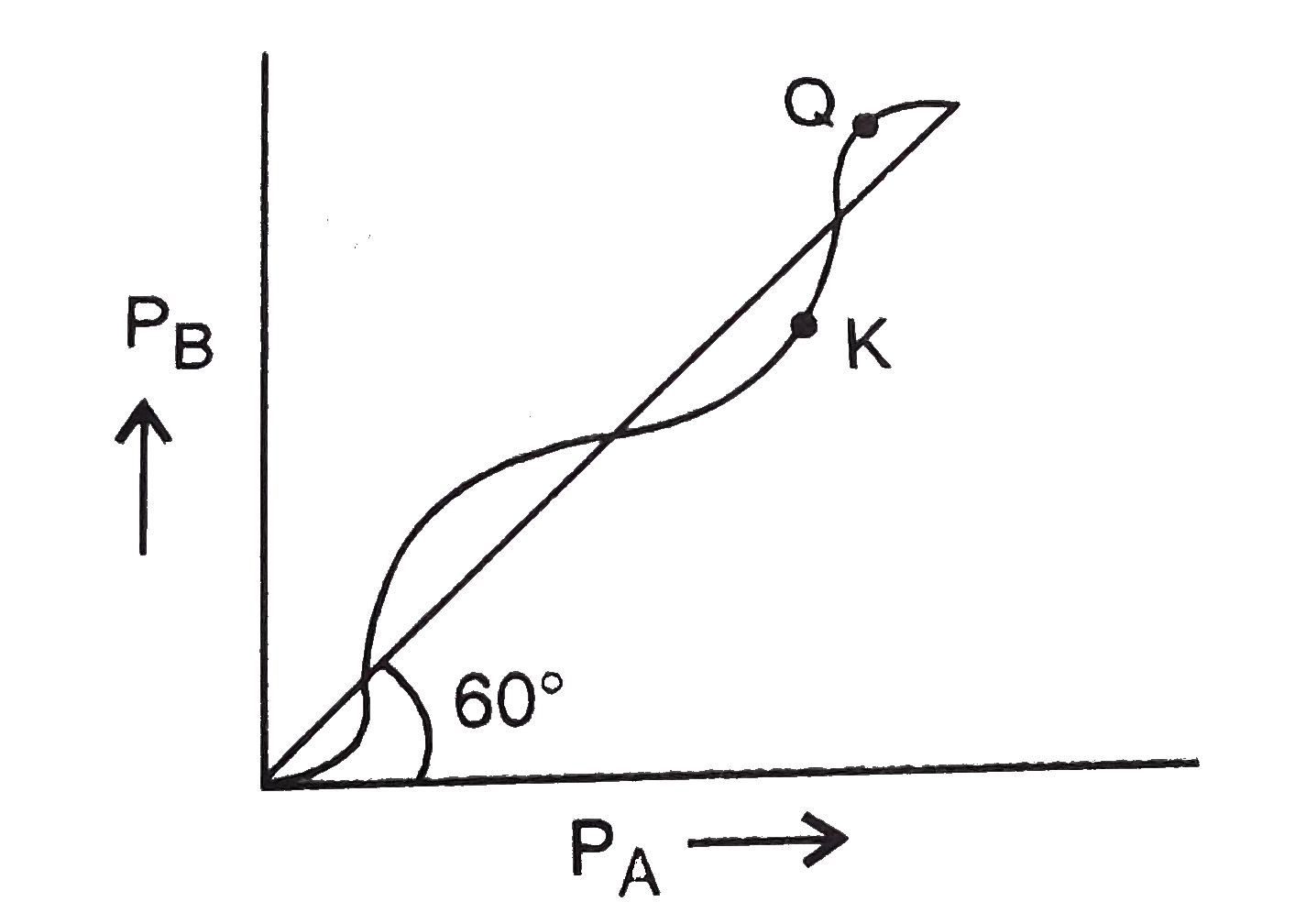A reaction with reaction quotient Qc and equilibrium constant Kc, will proceed in the direction of the products when-
Qc=Kc
Qc<Kc
Qc>Kc
Qc=0
The correct Answer is:B
Reaction move in forward direction
Topper's Solved these Questions
- KVPYBOOK - KVPY PREVIOUS YEARCHAPTER - KVPYEXERCISE - PART-I BIOLOGY
1 Videos
- KVPYBOOK - KVPY PREVIOUS YEARCHAPTER - KVPYEXERCISE - PART-2 CHEMISTRY
15 Videos
- KVPYBOOK - KVPY PREVIOUS YEARCHAPTER - KVPYEXERCISE - Mathematics
10 Videos
- KVPY 2021BOOK - KVPY PREVIOUS YEARCHAPTER - KVPY 2021EXERCISE - PART II CHEMISTRY
10 Videos
Similar Questions
Knowledge Check
The reaction quotient (Q) at equilibrium is
A=1B=KC>KD<KThe unit of equilibrium constant Kc for the reaction A+B⇔C would be
Amol−1LBmolL−1CmolLDNo unitAssertion: If Qc (reacton quotient) <KC (equlibrium constant) reaction moves in direction of reactants.
Reason: Reactin quotient is difined in the same way as equilibrium constant at any stage of the reaction.AIf both assertin and reason are true and the reason is the correct explanation of the asserttion.BIf both assertion and reason are true but reason is not correct explanation of the assertion.CIf assertion is true but reason is false.DIf the assertion and reason both are false.
If the concentration quotient of a reaction in greater than its equilibrium constant, then the reaction will proceed in the ______ direction.
View SolutionThe reaction which is in dynamic equilibrium, ensured us, that the reaction is reversible . But if that the reaction is in equilibrium. The reaction quotient predict either the reversible reaction is in equilibrium or tries to achieve equilibrium. In those reactions which have not achieved equilibrium, we obtain reaction quotient Qc in place of equilibrium constant (Kc) by substituting the concentration of reactant and product at the time, at whih we have to calculate the value of Qc . To determine the direction at which the net reaction will proceed to achieve equilibrium, we compare values of Qc and Kc. The three possible cases are shown as comparison of Kc and Qc in the following figures.

Change in Gibbs free energy, i.e., ΔG is the driving force of any reaction.
For spontaneous reaction , ΔG=−ve
For non-spontaneous reaction , ΔG=+ve
For reaction at equilibrium , ΔG=0
Thermodynamically, we know that
ΔG=ΔG∘+RTlnQ, where Q is reaction quotient and ΔG∘= change in Gibbs energy at standard condition.
For equilibrium A(g)⇔B(g)(Keq=1.732) If the pressure of the system [varied by introducing a stream of A(g) and B (g) is represented by the curve at constant temperature T.

Which of the following is the correct statement at point R in the figure above ?
View SolutionThe reaction which is in dynamic equilibrium, ensured us, that the reaction is reversible . But if that the reaction is in equilibrium. The reaction quotient predict either the reversible reaction is in equilibrium or tries to achieve equilibrium. In those reactions which have not achieved equilibrium, we obtain reaction quotient Qc in place of equilibrium constant (Kc) by substituting the concentration of reactant and product at the time, at whih we have to calculate the value of Qc . To determine the direction at which the net reaction will proceed to achieve equilibrium, we compare values of Qc and Kc. The three possible cases are shown as comparison of Kc and Qc in the following figures.

Change in Gibbs free energy, i.e., ΔG is the driving force of any reaction.
For spontaneous reaction , ΔG=−ve
For non-spontaneous reaction , ΔG=+ve
For reaction at equilibrium , ΔG=0
Thermodynamically, we know that
ΔG=ΔG∘+RTlnQ, where Q is reaction quotient and ΔG∘= change in Gibbs energy at standard condition.
For equilibrium A(g)⇔B(g)(Keq=1.732) If the pressure of the system [varied by introducing a stream of A(g) and B (g) is represented by the curve at constant temperature T.

What will be the value of difference of standard Gibbs free energy to Gibbs free energy change at point Q in the figure above ?
View SolutionThe equilibrium constant (K) for the reaction. A+2B⇔2C+D is:
View SolutionAssertion : If reaction quotient, Qc for a particular reaction is greater than Kc the reaction will proceed in the direction of reactants.
Reason : Reaction quotient is defined in the same way as the equilibrium constant Kc except that the concentrations in Qc are not necessarily equilibrium values.
View Solution
